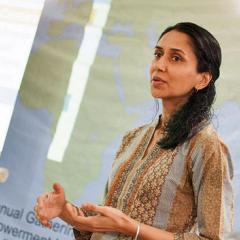Whose Fortune is at the Bottom of the Pyramid?
Coined by C.K. Prahalad, “the bottom of the pyramid” refers to the untapped economic markets where the poor--the more than 4 billion people living on $2/day--become product consumers. Although Prahalad’s thesis promoted the poor as consumers and as entrepreneurs, the reality is that the poor are seen only as consumers. During my three years of managing the renewable energy program of Gram Vikas (GV), an established grassroots NGO in Orissa, India, I have been repeatedly approached by companies that have packaged existing technologies as products for the poor. More recently, I have been surprised to come across companies from the developed world, backed by prominent venture capitalists, seeking to sell products to the poor, without any openness towards the poor becoming more than mere consumers. In my research of community participation in community-based micro hydro projects, I have found that technology cannot be sustained in poor communities, unless the technology is localized and community members lead the implementation. The process of technology implementation with the poor can trigger empowerment that lives far beyond the end product.
My research is a case study of GV’s community-based micro hydro program in Orissa, India, evaluating obstacles in sustaining projects and exploring tangible ways to overcome them. Using the results of my evaluation of GV’s existing projects, I facilitated the NGO to modify its approach in future projects. Technical challenges in the existing projects had occurred primarily due to over-dependence on outside developers, based in far away cities. With their business heavy in various parts of India, the outside developers carried no commitment to return to rural Orissa address technical failures. Similarly, social challenges occurred due to over-dependence on GV staff, whose insecurity prevented them from facilitating genuine community leadership. To address these challenges, the core concept of the new approach is to empower genuine stakeholders to implement and to sustain the project. For example, trained local fabricators have greater stake in producing reliable technology than suppliers based in Delhi. Similarly, end-users have greater stake, than Gram Vikas staff, in sustaining their technology.
The results of applying the new approach are promising. With support from Practical Action (PA), an international NGO focused on community-based technology, I was able to facilitate fabrication of the turbine assembly locally in a town 35km away from the village. This has ensured prompt servicing and successful trouble-shooting. Similarly, the induction generator for the system was also prepared by a trained local motor expert. Although the trained local experts can now fabricate, modify, and install the system, PA insists that the locals do not have enough formal engineering background to understand design theory. I disagree—since the local fabricators have hands-on skills and strong interest, an innovative and practical curriculum can teach them how to design micro hydro systems. The effort in training the local fabricators to design is a better investment than the effort required in pleading outside developers to remain committed to projects for poor.
The most important research observation thus far has been that the community youth are indeed the natural leaders needed for green technology implementation. Having facilitated them to self-manage the field level implementation activities—corpus fund collection, labor contribution, procuring raw materials for civil works, fabricating transmission line poles, installing the transmission line, and wiring houses—the youth leaders are actively sustaining the project, which involves tariff collection, powerhouse operation and maintenance, planning livelihoods activities, and managing labor contributions for all remaining activities. This type of community drive is far different from that seen in the existing projects, where the operation was often stopped by GV due to lack of community participation in maintaining the system.
The challenge and excitement for future projects is to facilitate the youth and the local fabricators to form a team that professionally designs and implements micro hydro and other rural energy applications. Establishing a sustainable financial structure is also challenge. The vision is to establish local implementing teams in various rural regions, and to finally form a support network--consisting of civil society members, local government, private sector leaders, donors, local fabricators, and end-users--to promote rural technology implemented by the poor. This vision allows the fortune at the bottom of the pyramid to be for the rural poor.
